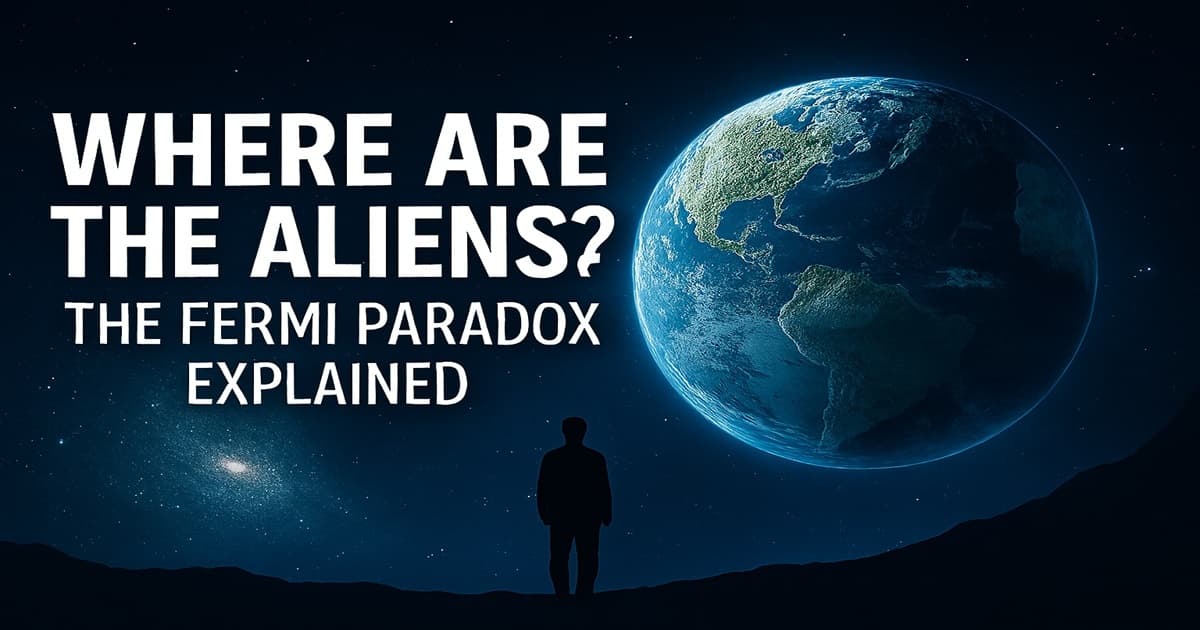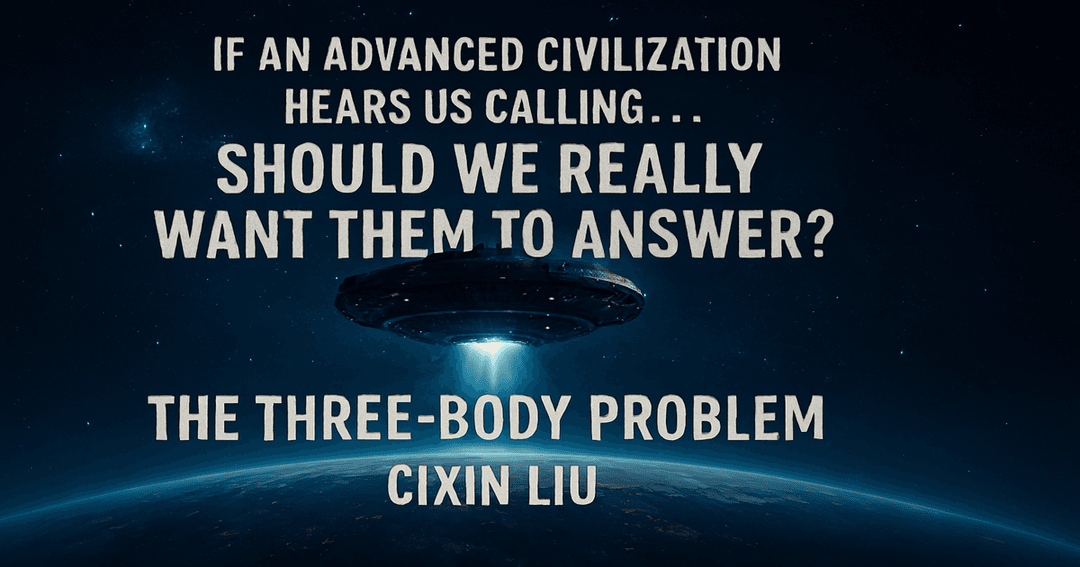In 1950, physicist Enrico Fermi asked a simple question that continues to baffle scientists today: "Where is everybody?" This seemingly innocent inquiry has become one of the most profound mysteries in modern science, known as the Fermi Paradox.
What Is the Fermi Paradox?
The Fermi Paradox highlights a striking contradiction between the high probability that extraterrestrial civilizations should exist and our complete lack of evidence for them. Given the vast number of stars in our galaxy alone—over 100 billion—and the billions of potentially habitable planets, shouldn't we have encountered alien life by now?
The Numbers Don't Add Up
Consider these mind-boggling statistics:
Our Milky Way galaxy contains approximately 400 billion stars
Scientists estimate that 20-50% of these stars have planets in the "habitable zone"
The universe is roughly 13.8 billion years old
Even if only 0.1% of suitable planets developed intelligent life, that would still mean millions of alien civilizations
Yet despite decades of searching through programs like SETI (Search for Extraterrestrial Intelligence), we've found absolutely nothing.
Leading Theories Behind the Fermi Paradox
Scientists have proposed numerous explanations for this cosmic silence. Here are the most compelling theories:
1. The Great Filter Theory
Perhaps the most sobering explanation suggests that there's a "Great Filter"—an evolutionary step so difficult that most life forms never pass through it. This filter could be:
The emergence of life from non-living matter
The development of complex cells
The evolution of intelligence
The ability to avoid self-destruction
If the Great Filter lies behind us, we're incredibly lucky. If it's ahead of us, our future may be grim.
2. The Zoo Hypothesis
This theory proposes that alien civilizations are aware of us but deliberately avoid contact, much like we observe animals in a zoo without interfering. Advanced civilizations might have a "Prime Directive" preventing them from contacting less developed species.
3. They're Already Here
Some scientists suggest that alien civilizations might exist in forms we don't recognize or expect. They could be:
Living in environments we consider uninhabitable
Existing as artificial intelligence rather than biological beings
Operating on timescales vastly different from ours
4. The Rare Earth Hypothesis
This theory argues that while simple life might be common, complex life requiring specific conditions is incredibly rare. Earth's unique combination of factors—including our moon, Jupiter's protective gravitational field, and our position in the galaxy—might be exceptionally uncommon.
Modern Search Efforts and Technology
Today's search for extraterrestrial intelligence uses cutting-edge technology:
SETI Programs
The Search for Extraterrestrial Intelligence continues monitoring radio frequencies for artificial signals. Recent advances include:
Breakthrough Listen: A $100 million project scanning millions of stars
Fast radio bursts detection and analysis
Artificial intelligence to identify potential signals
Exoplanet Discovery
The Kepler Space Telescope and other missions have revolutionized our understanding of planetary systems. We've discovered:
Over 5,000 confirmed exoplanets
Potentially habitable worlds like Kepler-452b and Proxima Centauri b
Evidence of water on multiple celestial bodies
The Drake Equation: Calculating the Odds
Astronomer Frank Drake developed an equation to estimate the number of communicating civilizations in our galaxy:
N = R × fp × ne × fl × fi × fc × L*
Where each variable represents factors like star formation rate, fraction of planets with life, and civilization longevity. While the equation contains many unknowns, it provides a framework for thinking about alien life probability.
Recent Developments and UAP Phenomena
The conversation around extraterrestrial life has evolved significantly, especially following:
Pentagon's release of UAP (Unidentified Aerial Phenomena) videos
Establishment of official government UAP investigation programs
Increased scientific interest in studying unusual aerial phenomena
These developments have brought renewed attention to the Fermi Paradox and the possibility that evidence might already exist.
Implications for Humanity's Future
The Fermi Paradox carries profound implications:
If We're Alone
Humanity bears enormous responsibility as potentially the only intelligent life
Our survival becomes cosmically significant
Space exploration and colonization become crucial for species preservation
If We're Not Alone
Contact with alien civilizations could revolutionize human knowledge
We must prepare for potential challenges of interstellar communication
Our understanding of life, intelligence, and our place in the universe would transform
What This Means for Space Exploration
The Fermi Paradox continues driving space exploration initiatives:
Mars colonization efforts by SpaceX and NASA
James Webb Space Telescope searching for biosignatures
Upcoming missions to Europa and Enceladus, moons with subsurface oceans
Conclusion: The Search Continues
The Fermi Paradox remains one of science's greatest unsolved mysteries. Whether we're alone in the universe or part of a cosmic community we haven't yet discovered, the question continues inspiring scientific research, technological advancement, and philosophical reflection.
As our detection capabilities improve and our understanding of life's possibilities expands, we may finally answer Fermi's famous question. Until then, we must continue looking up at the stars with wonder, knowing that the answer to "Where is everybody?" could fundamentally change our understanding of existence itself.
The silence of the cosmos doesn't necessarily mean we're alone—it might simply mean we haven't been listening long enough, in the right way, or in the right places. The search for our cosmic neighbors continues, and the answer, when it comes, will be worth the wait.


